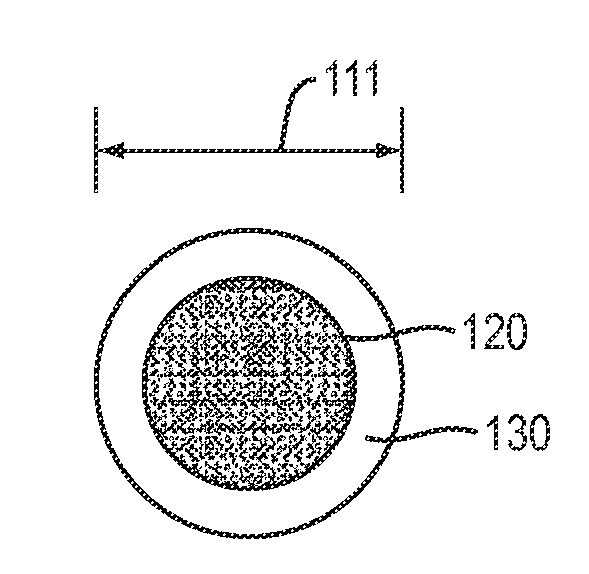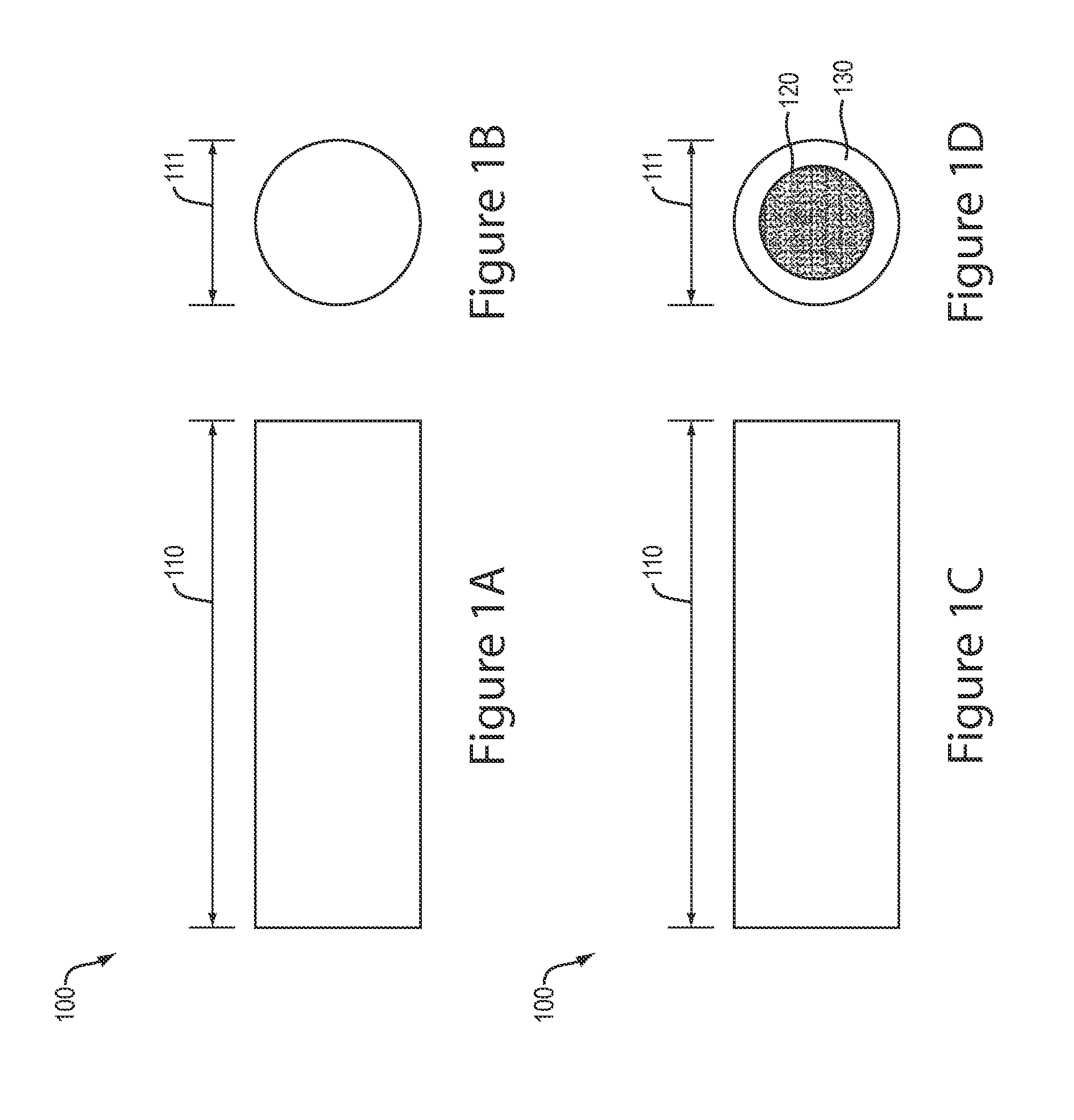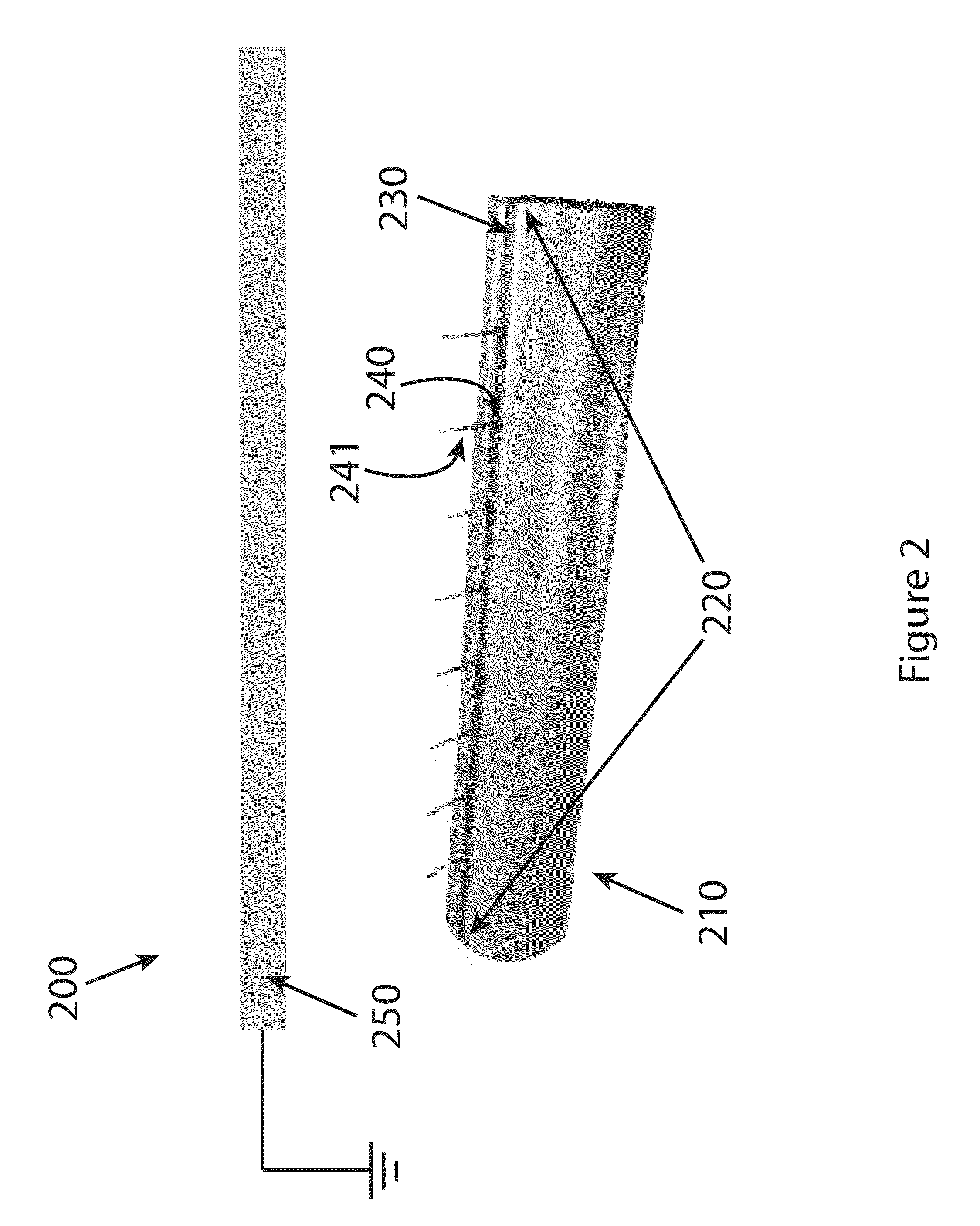Electrospinning process for fiber manufacture
- Summary
- Abstract
- Description
- Claims
- Application Information
AI Technical Summary
Benefits of technology
Problems solved by technology
Method used
Image
Examples
example 1
Formation of Homogeneous Fibers
[0030]Homogeneous fibers made of poly(lactic co-glycolic acid) (L-PLGA) were manufactured in accordance with the present invention. A solution containing 4.5 wt % of 85 / 15 L-PLGA in hexafluoroisopropanol was pumped into one end of a 10 cm long hollow tube (1 cm diameter) having a 0.4 cm slit of the present invention at a rate of 8 milliliters per hour. A grounded, flat, rectangular collecting plate was placed approximately 15 centimeters from the slit of the cylinder, and a voltage of 25-35 kV was applied, and the resultant fibers were collected on the collecting plate and examined under scanning electron microscopy as illustrated in FIG. 7b.
example 2
Formation of Core-Sheath Fibers
[0031]Core-sheath fibers were manufactured in accordance with the present invention, as shown in FIG. 8a. A rhodamine-containing core solution containing 15 wt % polycaprolactone in a 3:1 (by volume) chloroform:acetone solution was pumped through a hollow cylindrical tube having a slit therethrough at a rate of 10 ml / hour. Jets were formed by applying a voltage of 25 kV. Once the Taylor cones were stable, a syringe pump and needle filled with a fluorescein-containing sheath solution containing 15 wt % polycaprolactone in a 6:1 (by volume) chloroform:methanol solution was placed so that the needle was adjacent to one of the Taylor cones, and the sheath solution was pumped at a rate of 6 ml / hour. To verify the core-sheath structure of the resulting fibers, fluorescence micrographs were obtained which demonstrated that the rhodamine-containing core component was indeed surrounded by the fluorescein-containing sheath component, as shown in FIG. 8b.
PUM
| Property | Measurement | Unit |
|---|---|---|
| Length | aaaaa | aaaaa |
| Length | aaaaa | aaaaa |
| Diameter | aaaaa | aaaaa |
Abstract
Description
Claims
Application Information
 Login to View More
Login to View More - R&D
- Intellectual Property
- Life Sciences
- Materials
- Tech Scout
- Unparalleled Data Quality
- Higher Quality Content
- 60% Fewer Hallucinations
Browse by: Latest US Patents, China's latest patents, Technical Efficacy Thesaurus, Application Domain, Technology Topic, Popular Technical Reports.
© 2025 PatSnap. All rights reserved.Legal|Privacy policy|Modern Slavery Act Transparency Statement|Sitemap|About US| Contact US: help@patsnap.com



